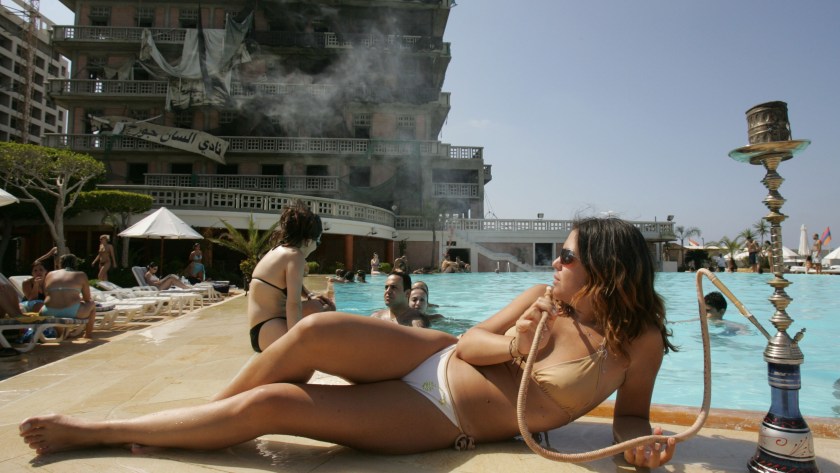
A Lebanese woman smokes a waterpipe, locally known as nargileh, next to the swimming pool of Beirut’s landmark Saint-Georges hotel (background) 05 June 2005. Lebanon’s former premier Rafiq Hariri was assassinated in a massive car bomb explosion outside the hotel on February 14. The owner of the hotel, Fady Khoury, was slightly wounded in the attack which he said cost him losses worth millions of dollars. The hotel, overlooking the Mediterranean, had been badly damaged during the famous ‘hotels battle’ in 1976 at the start of the Lebanese civil war and was still under reconstruction. Only the pool area has been refurbished and open to the public. (Patrick Baz/AFP/Getty Images)
Despite the city’s reputation as a historically troubled and violent city, Beirut is experiencing a relative renaissance period with its art and culture scenes flourishing. It would be easy for anyone to write the city off as having a brief moment of peace and prosperity in between waves of wanton terror, but The New York Times Magazine‘s Michael Specter would argue otherwise. Read his deep dive into Beirut’s beauty here.
This article appeared in an InsideHook newsletter. Sign up for free to get more on travel, wellness, style, drinking, and culture.